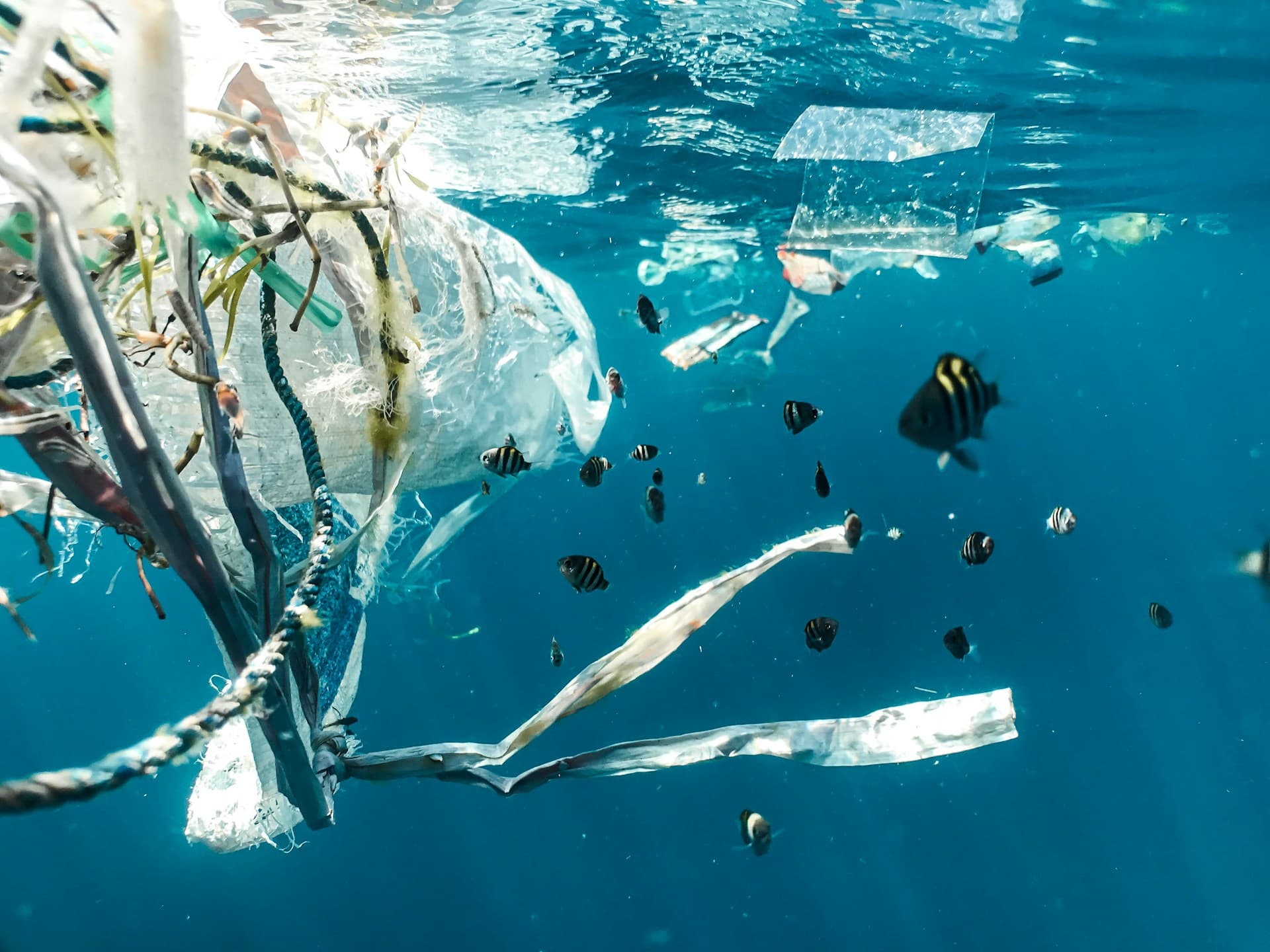Tech solutions for reducing plastic waste in oceans

The problem of plastic waste polluting our oceans has gripped the global conscience. A testament to our reliance on convenience and disposable goods, the plastic debris choking our marine environments has dire consequences for marine life, water quality, and the broader ecosystem. While individual and collective actions to reduce, reuse, and recycle plastic goods are important, they are insufficient to fully address this pervasive issue. Thankfully, technology has begun to flex its innovative muscles, offering promising solutions to help clean our oceans. This article will delve into the role of technology in addressing this global problem, focusing on initiatives to clean up plastic waste already in the seas and preventative measures to stop plastics from reaching water bodies in the first place.
Tech Innovations for Ocean Cleanup
The cleanup of plastic waste in our oceans is a monumental task. The vastness of the oceans and the scattered nature of the waste make it a formidable challenge. However, several innovative technologies are being developed and deployed to tackle this problem.
Avez-vous vu cela : Video games : Top 7 sectors where image-generating AI can be useful
One such innovation is the Ocean Cleanup project. This Dutch initiative uses a passive system to concentrate and collect plastic debris. Deployed in the Great Pacific Garbage Patch, the largest accumulation zone of ocean plastic, the system utilizes natural oceanic forces to capture plastic. The design is simple yet ingenious, consisting of a 600-meter-long float and a tapered 3-meter-deep skirt attached underneath. The float keeps the system on the surface, while the skirt collects debris below. Encouragingly, this system has proven successful in capturing microplastics as small as 1 millimeter.
Another promising technology is the use of drones for ocean cleanup. These drones can be deployed to scan large swathes of the ocean surface, identify clusters of plastic waste, and collect it. They can work much faster than human crews, covering more ground and collecting more waste in less time.
Avez-vous vu cela : The future of AI-driven journalism and news reporting
Emerging Technologies for River Cleanup
The journey of a piece of plastic waste often begins long before it reaches the ocean. Rivers act as conduits, channeling waste from inland areas to the sea. Therefore, stopping plastics from entering oceans necessitates cleaning up our rivers.
The Interceptor is a prime example of technology tackling river pollution. This solar-powered, autonomous vessel collects waste from rivers and stores it for subsequent recycling. The Interceptor is capable of extracting 50,000 kilograms of waste per day, preventing it from reaching the sea.
Additionally, Bubble Barriers are gaining traction as a means of capturing waste in rivers. This innovative technology creates a wall of bubbles that rise from the riverbed, pushing waste to the surface where it can be collected and disposed of properly.
Biodegradable Plastics and Alternative Materials
Biodegradable plastics and alternative materials represent key technological advancements that can help mitigate ocean plastic pollution. These materials aim to minimize the environmental footprint of products by ensuring they break down and degrade, rather than persisting and polluting the environment.
For instance, Polylactic Acid (PLA) is a type of biodegradable plastic derived from renewable resources such as cornstarch or sugar cane. PLA can decompose within a few months under industrial composting conditions. Another example is Polyhydroxyalkanoates (PHAs), plastics produced by bacteria that are both biodegradable and bio-based.
However, it’s important to note that not all biodegradable plastics are created equal. Some require specific environmental conditions to degrade, which may not be present in marine environments. To overcome this, scientists are developing marine-degradable plastics, which break down specifically in sea water.
Utilizing AI and Machine Learning for Plastic Waste Management
Artificial Intelligence (AI) and Machine Learning (ML) are potent tools in the fight against ocean plastic pollution. Their ability to analyze large amounts of data and identify patterns can be leveraged to optimize waste management systems, increasing efficiency and reducing costs.
AI technology can be employed to analyze waste streams and identify inefficiencies in recycling processes. It can predict the volume and type of waste generated, helping to plan efficient collection and recycling schedules.
Machine Learning, on the other hand, can be used to sort and separate plastics for recycling. Traditional recycling methods often struggle to differentiate between different types of plastics, but ML algorithms can be trained to accurately distinguish them, improving the recycling process and reducing contamination.
Public-Private Partnerships: A Collaborative Approach
Addressing ocean plastic pollution requires a collective effort. Public-private partnerships can provide the necessary resources, expertise, and reach to make a significant impact.
Tech companies can bring innovative solutions, while governments can provide regulatory support and funding. Additionally, non-profits and community groups can contribute local knowledge and mobilization capacity.
One successful example is the partnership between IBM and Plastic Bank. This collaboration uses blockchain technology to create a transparent and secure supply chain for plastic waste collection and recycling. The initiative incentivizes waste collection by providing digital tokens to individuals in exchange for collecting and recycling plastic waste.
While the road to a plastic-free ocean is long, these technological advancements bring hope. Through innovation, collaboration, and determination, we can help restore the health of our oceans, preserving them for future generations.
Frontier Technologies: A Glance into the Future
As we delve deeper into the 21st century, technological advancements continue to unfold, offering a bright beacon of hope in our fight against ocean plastic pollution. Frontier technologies, which include advanced robotics, nanotechnology, and synthetic biology, are advancing rapidly and could potentially revolutionize our approach towards plastic waste management.
Advanced robotics offer a potential solution to the colossal task of cleaning up the Great Pacific Garbage Patch and other garbage patches. Robots can be designed to recognize and collect plastic waste from the ocean or rivers autonomously. By using advanced machine learning algorithms, these robots can increase their efficiency over time, learning to differentiate between valuable recyclables and non-recyclable waste. Some robotic designs even hold the potential to function as mobile recycling units, turning collected plastic waste into valuable raw materials on-the-spot.
Meanwhile, nanotechnology presents a different, but equally exciting approach. Scientists are exploring the use of ‘nano-sponges’ – tiny particles designed to soak up pollutants like a sponge. These sponges could be designed to especially attract plastic particles, effectively cleaning waterways of microplastics.
Synthetic biology also holds promising potential. Within this field, scientists are engineering bacteria and other microorganisms to consume and break down different types of plastic. While still in early stages of research and development, the implications of this technology for dealing with plastic pollution are vast.
Conclusion: Towards a Plastic-Free Ocean
With technology rapidly evolving, the dream of a plastic-free ocean is no longer a far-fetched ideal. From the mechanical brilliance of the Ocean Cleanup project and the Interceptor to the microscopic wonders of biodegradable PLA and PHAs, the tech world is offering a plethora of solutions to combat this global crisis.
AI and Machine Learning are revolutionizing waste management systems and the recycling process, while frontier technologies such as advanced robotics, nanotechnology, and synthetic biology are presenting new and unexplored ways to tackle plastic pollution. Public-private partnerships like the one between IBM and Plastic Bank demonstrate the power of collaboration and the potential of technology when directed towards a common goal.
However, it is crucial to remember that technology alone cannot solve the issue of plastic pollution. A systemic shift towards a circular economy, stricter regulations, and changes in consumer behavior are also necessary to truly overcome this problem. It is the combination of these efforts that will lead to significant and lasting reductions in plastic waste, preserving the health and biodiversity of our oceans for generations to come.
The journey towards a cleaner, plastic-free ocean is a challenging one, but with continued innovation, collaboration, and determination, it is a goal well within our reach. Remember, every bit of plastic that we keep out of our oceans is a victory, and every step we take towards a more sustainable world is progress.
